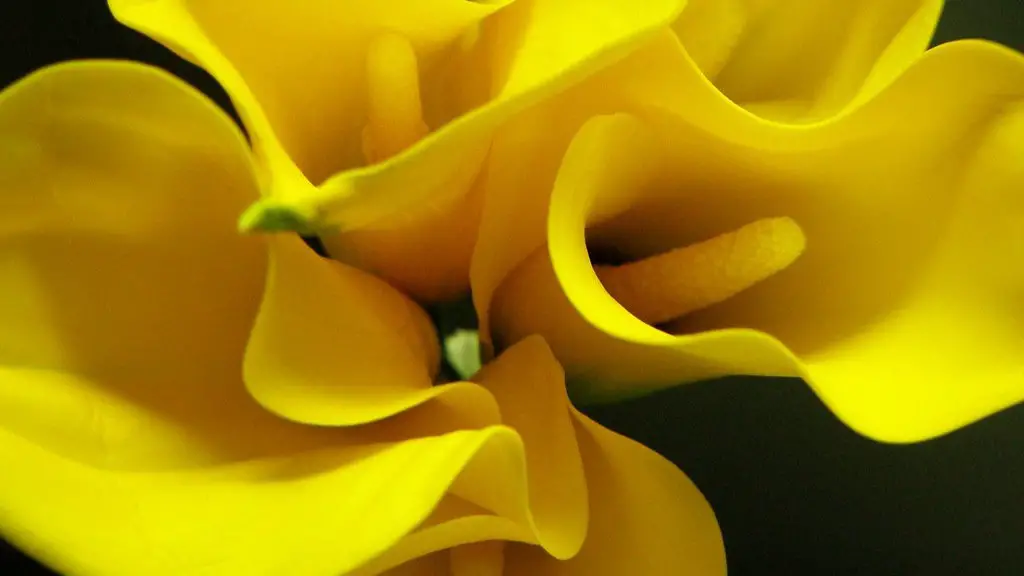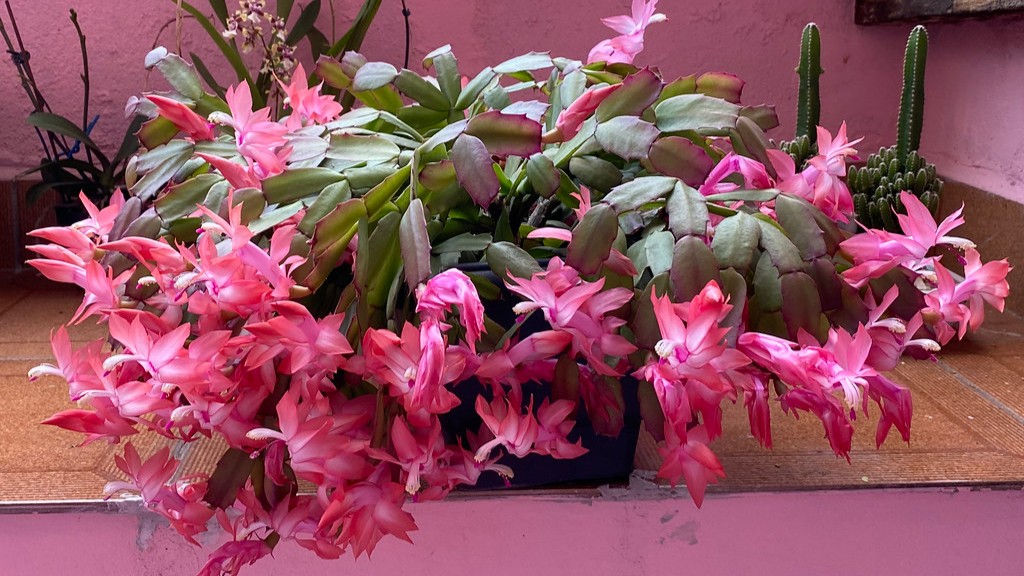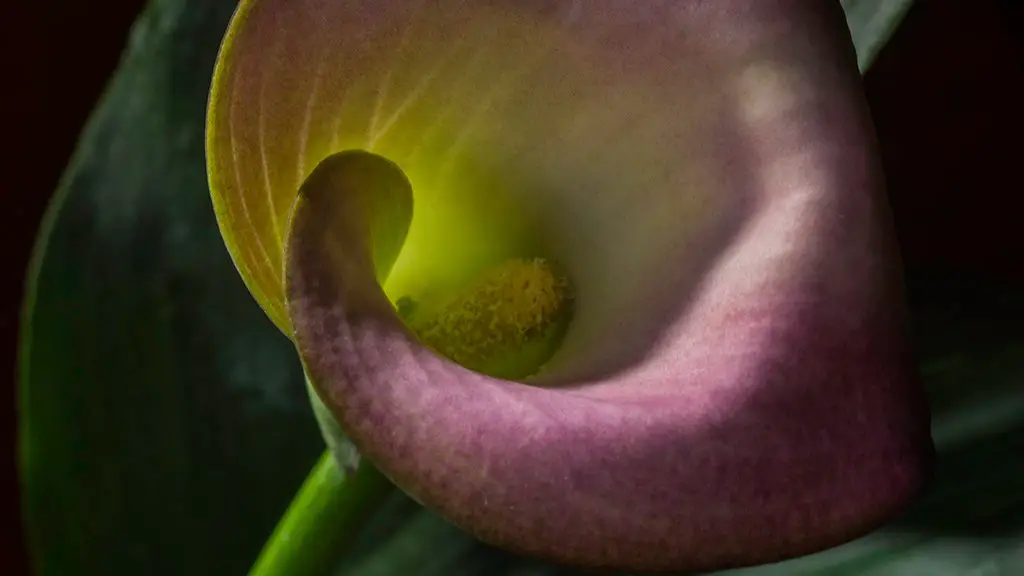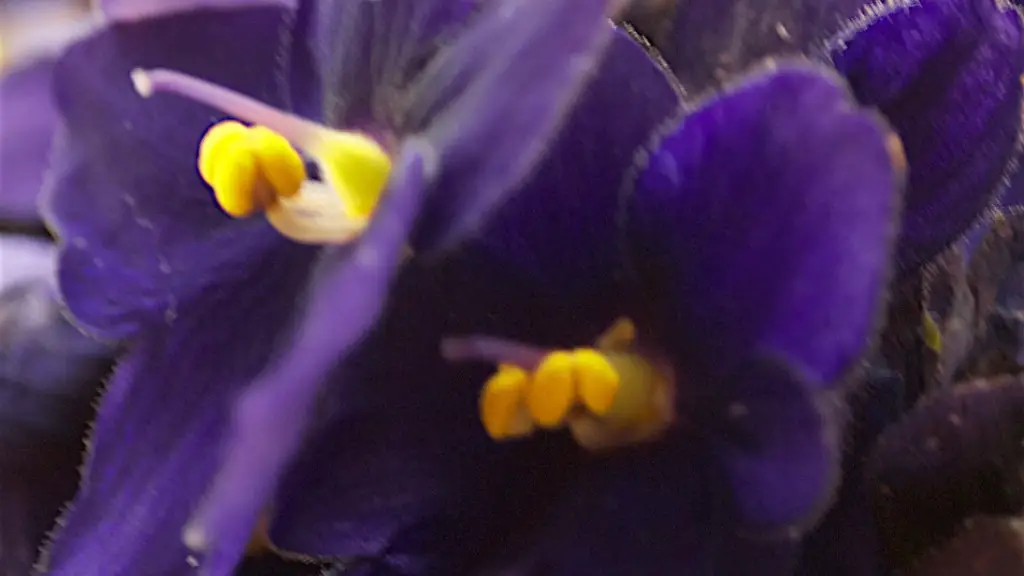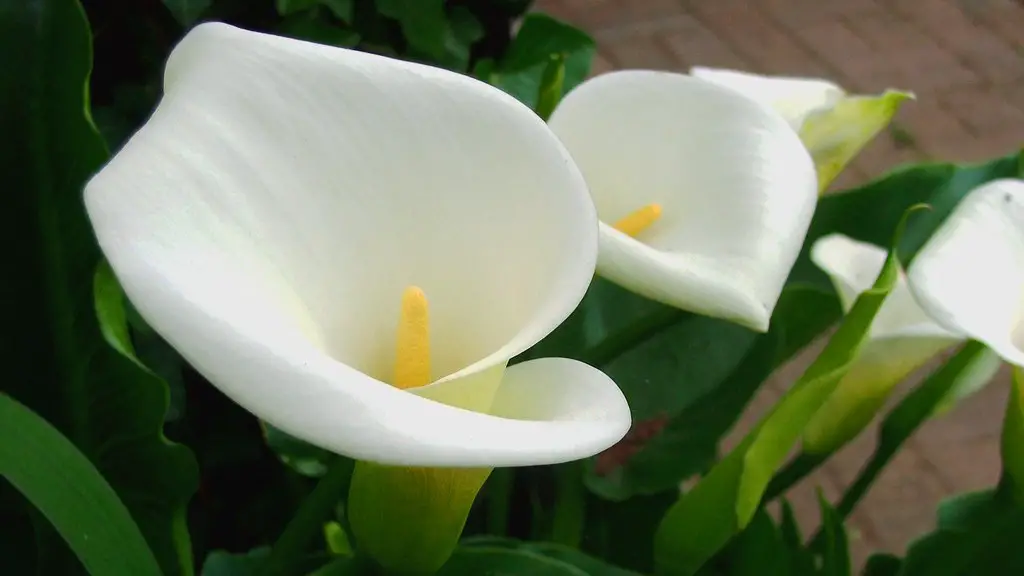A calla lily typically blooms for about two weeks. However, the length of time that a calla lily bloom will last will depend on the conditions in which it is grown. If the calla lily is grown in ideal conditions, it may bloom for a longer period of time.
Once the Calla Lily blooms, it will last for about two to three weeks.
How long do calla lily plants last?
To ensure your calla lilies stay fresh for as long as possible, follow these care tips:
-Handle the flowers with care, as their delicate blooms can bruise easily
-Cut the stems at an angle and place them in a vase with fresh, cool water
-Change the water every few days and re-cut the stems if necessary
-Keep the flowers out of direct sunlight and away from drafts
With proper care, your calla lilies should stay fresh for 7 to 10 days. Enjoy their elegant beauty while they last!
Many people think that calla lilies are only meant to be enjoyed for a short time, but the truth is that they are actually quite easy to care for as a perennial. With just a little bit of effort, you can keep your potted calla lily plant alive and blooming for years to come. Here are a few tips to help you get started:
-Place your calla lily in a bright spot indoors, such as near a south-facing window.
-Water your plant regularly, but be sure not to overwater, as this can lead to root rot.
-Feed your calla lily a balanced fertilizer every few weeks during the growing season.
-When the blooms start to fade, cut them back to encourage new growth.
With a little bit of love and care, your calla lily plant will thrive and provide you with beautiful blooms year after year.
Do calla lily come back every year
Calla lilies are known for their rhizomatous root system, which allows them to send out roots and return every year. They come in many colors, but are one of the few true black perennial flowers you can grow.
The Calla Lily is a beautiful, elegant flower that is perfect for adding a touch of class to any home or office. While they are relatively easy to care for, there are a few things to keep in mind to ensure that your Calla Lily stays healthy and looking its best.
First, be sure to keep the soil moist, but not soggy. Calla Lilies like to have their roots wet, so be sure to water them regularly. However, too much water can cause the roots to rot, so be sure to let the soil dry out a bit between waterings.
Second, provide bright, indirect light. Calla Lilies do best in bright, indirect light, such as near a window. However, direct sunlight can scorch the leaves, so be sure to protect them from direct sun.
Third, apply liquid fertilizer monthly while in flower. Calla Lilies are heavy feeders and will benefit from a monthly dose of liquid fertilizer while they are in bloom.
Fourth, keep away from heating and A/C vents. Calla Lilies don’t like drafts, so be sure to keep them away from heating and A/C vents.
Fifth, reduce watering when the plant enters
What to do with calla lilies when they stop blooming?
Potted calla lilies can be kept and replanted to bloom again next year. When the plant stops blooming, cut the stem back to about an inch above the pot. Allow the plant to go dormant in a cool, dark place without water for a couple of months. Then, replant in fresh potting soil and place in a sunny location. Start watering again and the plant should bloom the following year.
If you’re looking for a plant that will stay put, calla lilies are a great option. They’re known for being well-behaved and are unlikely to spread or become invasive. Another bonus is that they’re just as beautiful in containers as they are in the ground.
Can you leave calla lilies in pots over winter?
The calla lily is a stunning flower that is often seen in bouquets and floral arrangements. While these flowers are beautiful, they are also quite delicate. The calla lily is a tender perennial, which means that the plant’s rhizomes must be dug up in fall and stored indoors over the winter months. This is a delicate process, but it is necessary to ensure that the plant survives the cold winter months.
If you want your plant to bloom for an extended period of time, it’s best to keep it root bound. By doing this, you’ll encourage more flowers. Just be sure to check on the plant regularly and water as needed.
Should you cut old flowers off calla lily
Calla lilies are beautiful flowers that add a touch of elegance to any garden. Unlike many other flowers, calla lilies do not drop their petals when they are done blooming. Instead, the flower rolls up into a tube and often turns green on the outside. Once the calla lily flower begins to die, it is important to clip off the spent blossoms. These blossoms have no purpose and can be unsightly.
Calla lilies are really easy to multiply and they make great bulbs. All you have to do is dig them up and replant them in different locations. They create other bulbs as they spread, but it’s easy to control how many bulbs you have.
Do calla lilies like sun or shade?
Calla lilies are versatile plants that can adapt to a range of conditions depending on the climate. In warm climates, they thrive in full sun or partial shade, while in cooler areas they do best in full sun. Calla lilies are winter hardy in zones 8-10, and in colder areas they can be grown as annuals or dug up and stored indoors for replanting the next spring.
Calla lilies need well-drained soil and prefer to be on the drier side, so it’s important not to overwater them. After initially planting them, water them lightly and only once a week. If the weather is hot or there’s a drought, you may need to water them more frequently.
Do calla lilies grow well in pots
While most growers are aware that callas can be grown as either a pot plant or cut flower, few know that some cultivars also make excellent bedding plants or patio container plants. Specialty cut flower growers can also make good use of these versatile plants. With their wide range of colors and attractive foliage, callas are sure to add a touch of class to any garden or landscape.
The calla lily is a fascinating flower with a rich history and meaning. On the one hand, the calla lily meaning expresses the idea of life and fertility. On the other hand, the calla lily is well-known symbol of death. One early calla lily meaning originates in ancient Greek culture, where the flower was thought to represent magnificent beauty. This origin stems from a tale regarding Hercules as a baby.
Do calla lilies spread on their own?
Yes, calla lilies spread by creating other bulbs. However, this spreading is quite easy to control, making it a great plant for both home gardens and public spaces.
These are just a few tips on how to care for calla lilies. If the leaves on the plant have very dark tips, it is likely due to too much fertilizer. Try cutting back on the fertilizer and adding coffee grounds between fertilizing rounds around the base of the plant. Calla lilies like acidic soil, so the coffee grounds will help to add acidity.
Why do my calla lilies not flower
If you want your calla lilies to bloom, they will need full sun. If they are planted somewhere that is too shady, they may not bloom at all. If you think that your calla lilies are not blooming because they are getting too little light, you may need to transplant them to a sunnier location.
Calla lilies are best suited for a bright, well-lit spot out of the strongest midday sun. They can tolerate partial shade, but full shade should be avoided. They can be grown on a well-lit windowsill, in a conservatory or a heated greenhouse. Once all risk of frost has past, calla lilies can also be grown in the garden, in pots or in a border.
Conclusion
A calla lily typically blooms for between two and four weeks.
A calla lily typically blooms for about three to four weeks.
